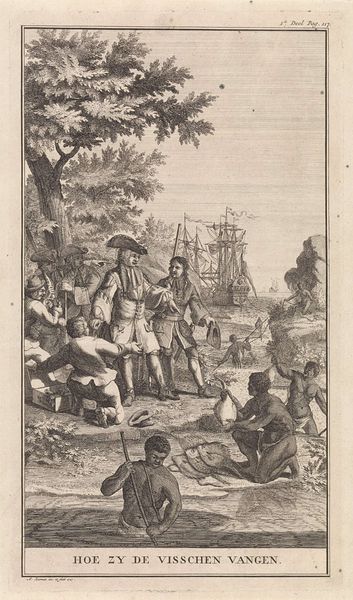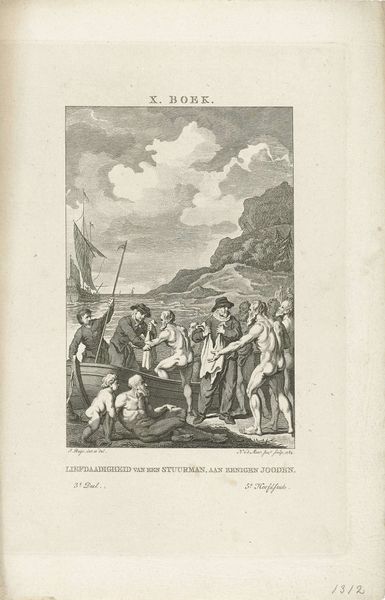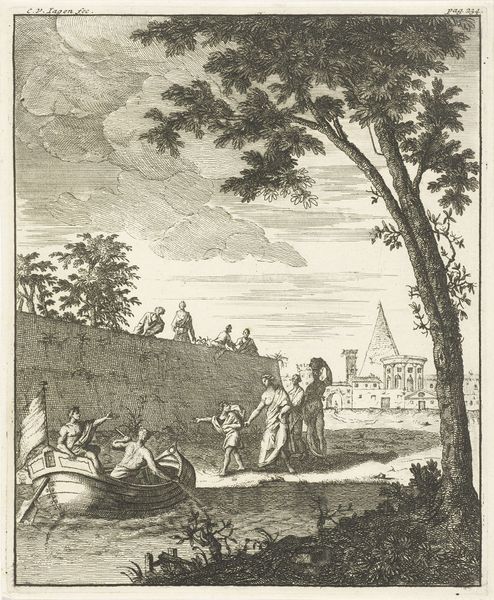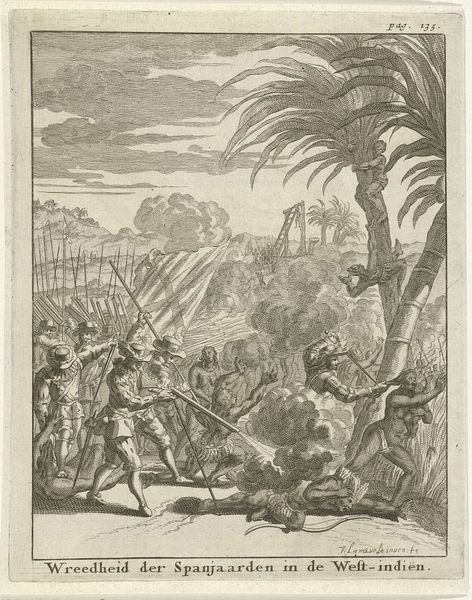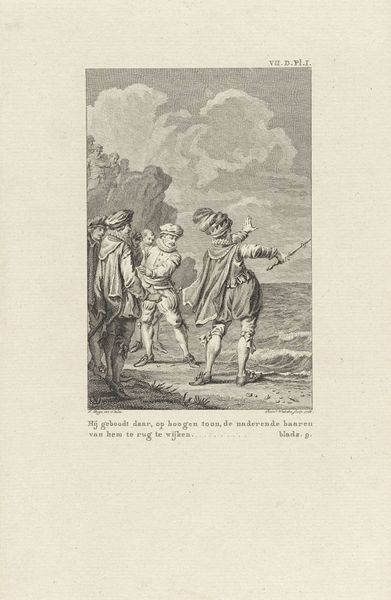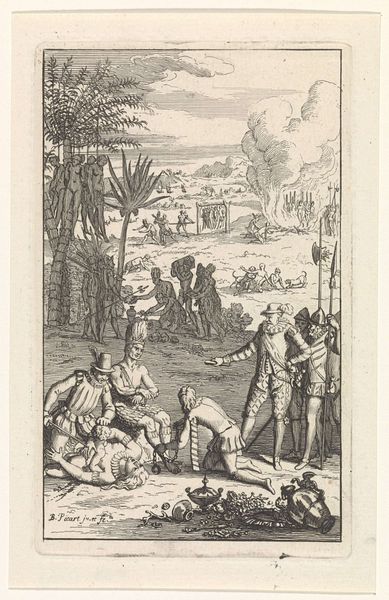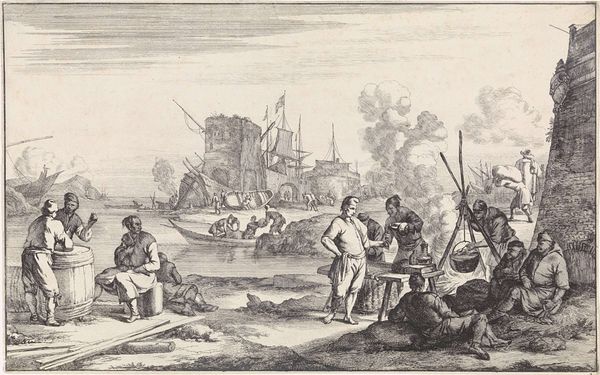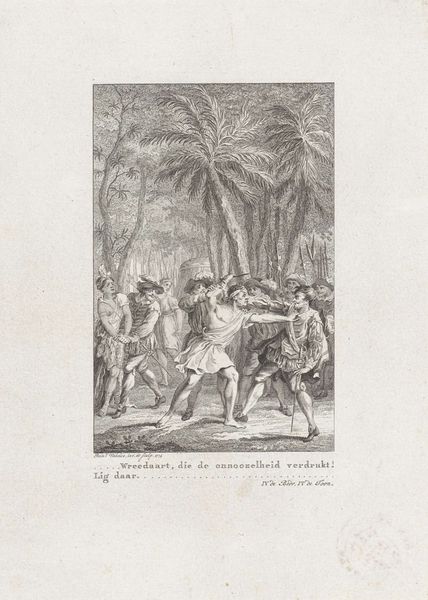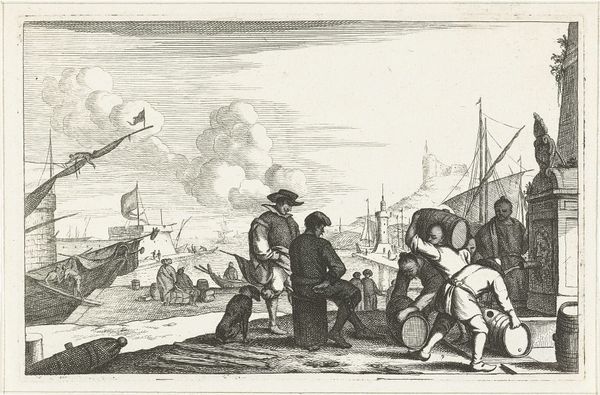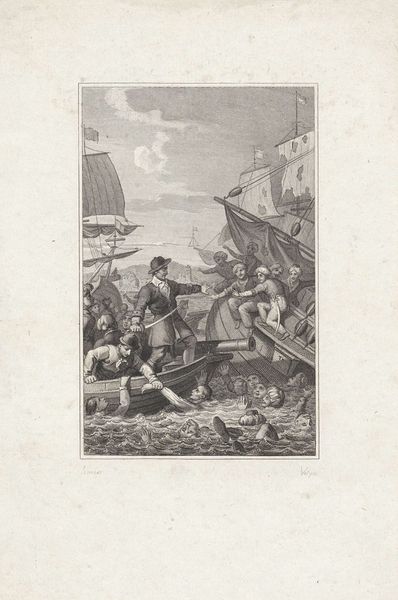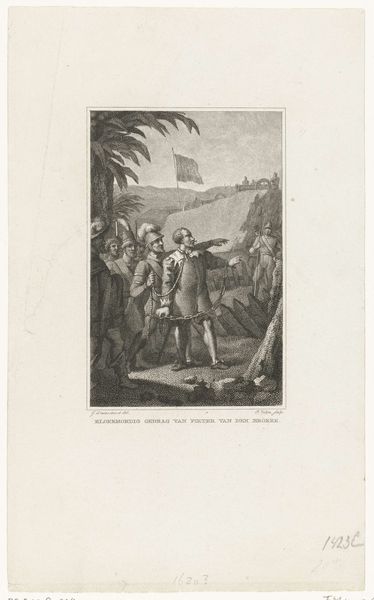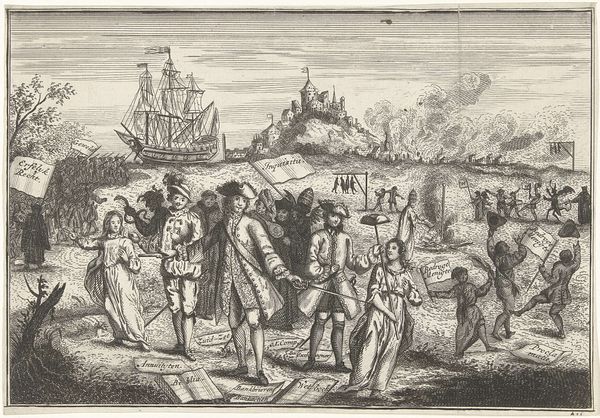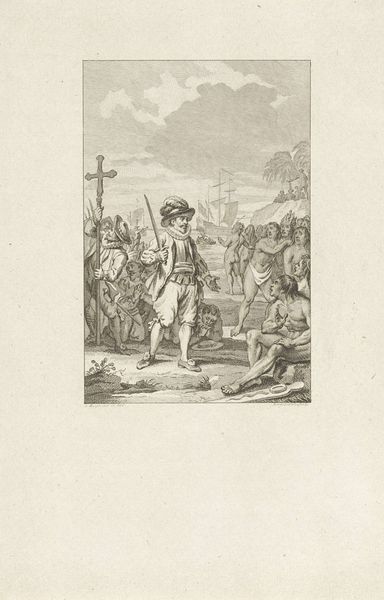
Dimensions: height 162 mm, width 102 mm
Copyright: Rijks Museum: Open Domain
Editor: This is “Slavenhandel,” or Slave Trade, an engraving from somewhere between 1758 and 1829, housed here at the Rijksmuseum, by Theodoor Koning. The detail is incredible, but the scene is really disturbing; a man is being exchanged between two European traders. What strikes you most about this work? Curator: Well, first off, that ornamental border! It frames a horrifying reality with…almost a sense of Baroque celebration. Don't you think? That tension hits you right away. It's a gut punch framed in pretty paper. It’s not just the transaction itself but the composed nonchalance around it; other people are in the background like the man's body is something like cloth, right? Editor: Absolutely. It feels deliberately jarring. Were prints like these meant to inform, or to persuade? Curator: I'd wager both. Prints were, pardon the pun, instrumental, spreading abolitionist ideas alongside straightforward record keeping. See the ship in the background? And those men trading the slave on the coast? Imagine a 17th-century meme – shocking imagery circulated widely to fuel discussion and, hopefully, action. How effective were those prints like “Slavenhandel”, after all? Editor: I see what you mean, circulating to start discourse... Looking at the body language in the work itself makes you feel… things. Thank you so much, this was eye-opening, especially considering what prints meant to circulate news. Curator: My pleasure. Art’s power lies, I think, in turning seeing into feeling, which could be so much more productive in turning our future discourse.
Comments
No comments
Be the first to comment and join the conversation on the ultimate creative platform.
